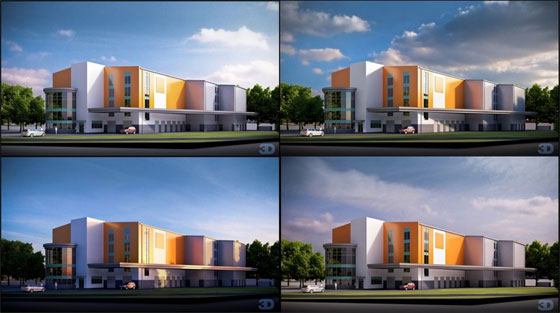
This is actually an overview many things combine together - Setting, Rendering engines, Texture mapping and Technique to achive photorealistic images Vs Showcase and Revit.
Now this difference between Realism of image and Positive and negative reasons of rendering in 3D Max Vs Showcase and Revit will include time rendering locality Vs in the cloud and cloud credits spent so you can make the best informed decisions when rendering.
The designers can show it in front of clients, draft a scene for additional modification or have a polished final image set in a beautiful landscape, It will help guide you through achieving the best end results to keep your boss and clients happy and win new business.
The tough part of importing Revit is that it requires a lot of material setup before a designer export to FBX. In the import dialogue of MAX it will merge objects by material assuming you are, going to just use the Render Engine and it imports materials, cameras, and lighting from Revit.
If a designer want to start from root geometry, It would export your Revit file into a DWG and import that. When it arrives into MAX, you get nice layers for the most part, but you get a lot of junk you do not want, so the first few things that normally done:
The outstanding video http://youtu.be/v1309HIHIiA will show some methods that how to improve the 1. Realism of image 2. Positive and negative reasons of rendering in 3D Max Vs Showcase and Revit.
